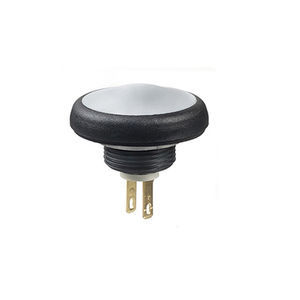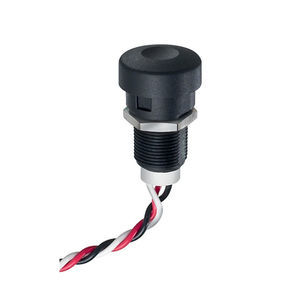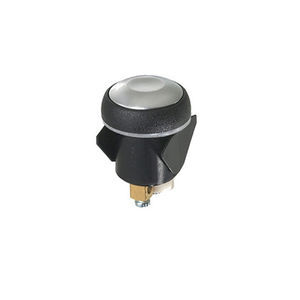
Push-button switch ICC3FAD2IP67
Add to favorites
Compare this product
Characteristics
- Type
- push-button
- Protection class
- IP67
- Operating temperature
Min.: -40 °C
(-40 °F)Max.: 85 °C
(185 °F)
Description
The ICC3FAD2 Panel Switch, part number ICC3FAD2, is a versatile and reliable solution for your electrical needs. With its sleek design and intuitive functionality, it falls under the category of Pushbutton Switches. This switch offers a range of electrical functions to meet your specific requirements, ensuring optimal performance.
Specifications
Distinctive Features:
• Momentary with short case, reduced behind-panel depth
• Tactile feedback
• Flat round actuator for optional marking
• Glossy actuator option (round curved only)
General Specifications:
• Panel thickness: 1.5 mm (.059) min. 4 mm (.157 max.)
• Total travel: 1.7 mm (.067)+/- 0.3 mm
• Typical operating force: 4 N +/- 2 N
• Low level or mechanical life: 1,000,000 cycles
• Torque: 1,5 Nm max. applied to nut
• Soldering: 320 °C max. for 3 sec
Environmental Specifications:
• Front panel sealing: IP67 according to IEC 60529
• Shock resistance: 100 g according to IEC 512-4, test 6c
• Vibration resistance: 10-500Hz - 10 g according to IEC 512-4, test 6d
• Salt spray: IEC 512-6, test 11f
• Robustness: IK06 according to EN 50102 (1 joule)
Electrical Specifications:
• Max. current/voltage rating with resistive load: 5 A 28 VDC, 70,000 cycles, 0.2 A 48 VDC, 500,000 cycles, 0.5 A 48 VAC, 500,000 cycles
• Initial contact resistance: 50 mΩ max.
• Insulation resistance: 1 GΩ min. at 500 VDC
• Dielectric strength: 1,500 Vrms 50 HZ between terminals
Catalogs
No catalogs are available for this product.
See all of APEM GmbH‘s catalogsRelated Searches
- Joystick
- Switch
- Push-button switch
- Hall effect joystick
- Hand operated joystick
- Finger operated joystick
- Control panel
- Rocker switch
- IP67 switch
- Lighting switch
- Digital control panel
- Switch with LED
- Customizable control panel
- Agricultural equipment switch
- IP65 control panel
- IP68 switch
- CANbus control panel
- IP54 switch
- IP65 switch
- Vibration-resistant switch
*Prices are pre-tax. They exclude delivery charges and customs duties and do not include additional charges for installation or activation options. Prices are indicative only and may vary by country, with changes to the cost of raw materials and exchange rates.






























































